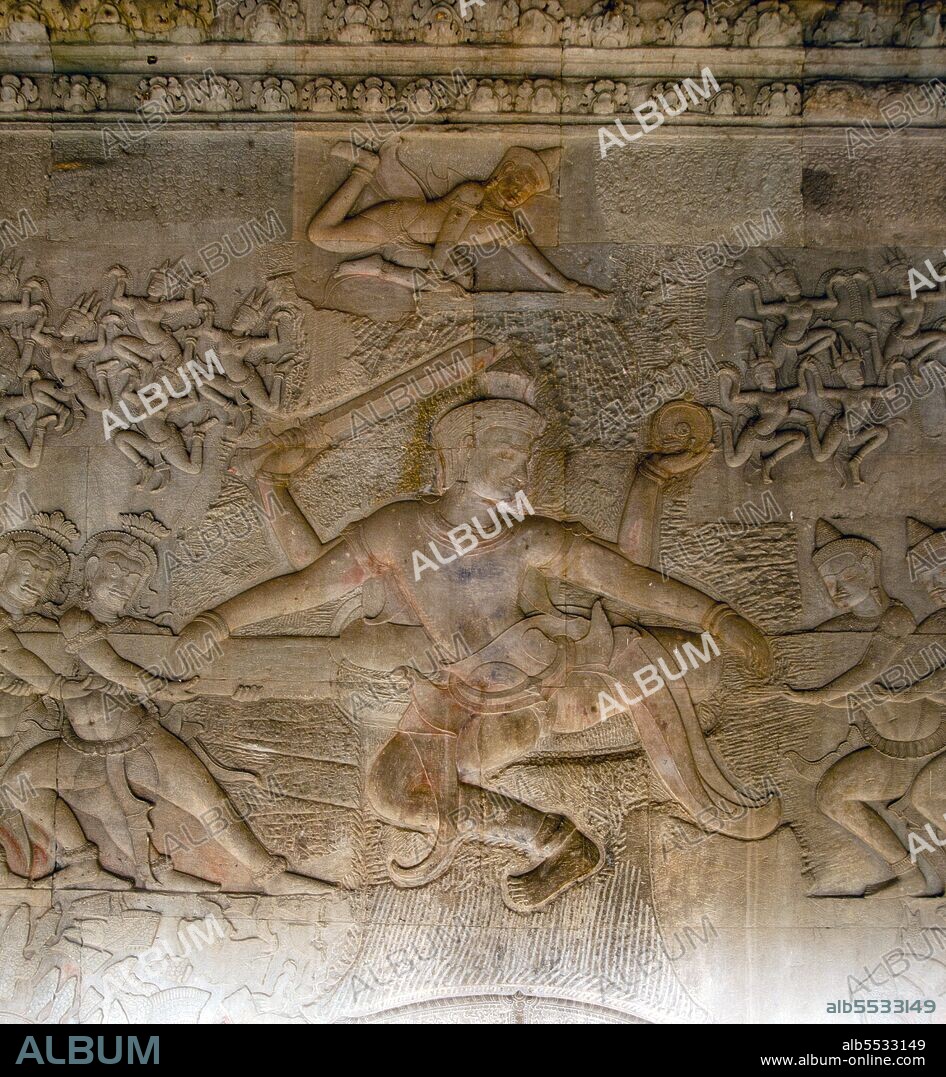alb5533149
Cambodia: The Hindu god Vishnu controlling the movements of the 91 asuras (sinful deities, left) and the 88 devas (deities, right), Churning of the Ocean of Milk (Sea of Milk), Indra appears above Vishnu, South Wing, East Gallery, Angkor Wat.

|
Añadir a otro lightbox |
|
Añadir a otro lightbox |



¿Ya tienes cuenta? Iniciar sesión
¿No tienes cuenta? Regístrate
Compra esta imagen

Título:
Cambodia: The Hindu god Vishnu controlling the movements of the 91 asuras (sinful deities, left) and the 88 devas (deities, right), Churning of the Ocean of Milk (Sea of Milk), Indra appears above Vishnu, South Wing, East Gallery, Angkor Wat.
Descripción:
Ver traducción automática
Angkor Wat was built for King Suryavarman II (ruled 1113-50) in the early 12th century as his state temple and capital city. As the best-preserved temple at the Angkor site, it is the only one to have remained a significant religious centre since its foundation – first Hindu, dedicated to the god Vishnu, then Buddhist. It is the world's largest religious building. The temple is at the top of the high classical style of Khmer architecture. It has become a symbol of Cambodia, appearing on its national flag, and it is the country's prime attraction for visitors. Angkor Wat combines two basic plans of Khmer temple architecture: the temple mountain and the later galleried temple, based on early South Indian Hindu architecture. It is designed to represent Mount Meru, home of the devas in Hindu mythology: within a moat and an outer wall 3.6 kilometres (2.2 mi) long are three rectangular galleries, each raised above the next. At the centre of the temple stands a quincunx of towers.
Crédito:
Album / David Henley/Pictures from History/Universal Images Group
Autorizaciones:
Modelo: No - Propiedad: No
¿Preguntas relacionadas con los derechos?
¿Preguntas relacionadas con los derechos?
Tamaño imagen:
3401 x 3681 px | 35.8 MB
Tamaño impresión:
28.8 x 31.2 cm | 11.3 x 12.3 in (300 dpi)
Palabras clave:
ARCHITECTURAL • ARCHITECTURE • ARQUITECTONICA • ARQUITECTONICO • ARQUITECTURA • ART • ARTE • ARTES • ASIA • ASIATICO • BAJORRELIEVE • BUDISMO • BUDISTA • BUDISTAS • CAMBOYA • CIUDAD ANTIGUA • CULTURA • ESCULPIDA • ESCULTURA • HINDUISMO • HISTORIA • HISTORICO • INDRA • KHMER • MONUMENTO • MUNDIAL DE LA UNESCO PATRIMONIO DE LA HUMANIDAD • RELIEVE • RELIGION • SUDESTE DE ASIA • TEMPERA • TEMPLE • TEMPLO • TEMPLOS • VISHNU
 Pinterest
Pinterest Twitter
Twitter Facebook
Facebook Copiar enlace
Copiar enlace Email
Email
